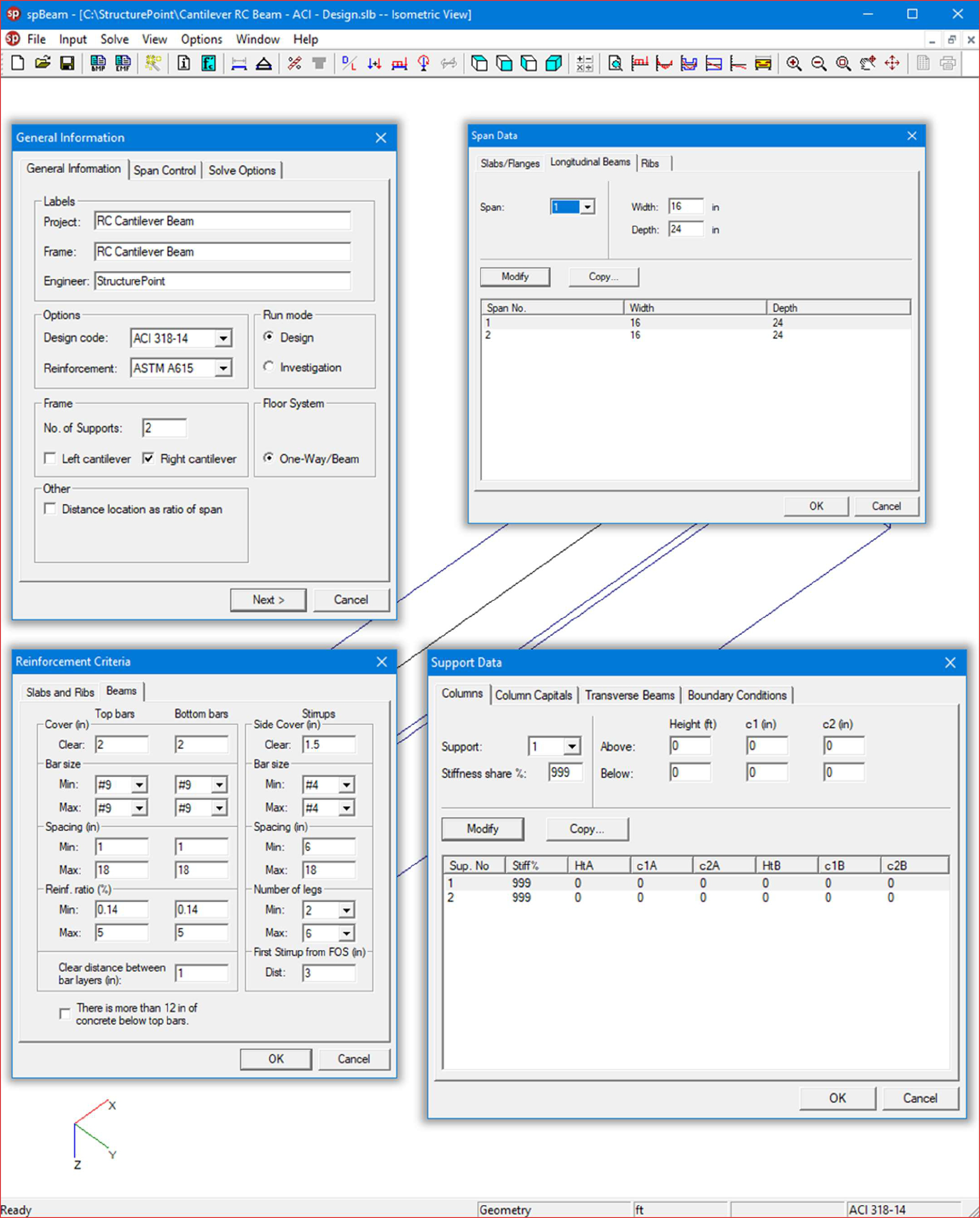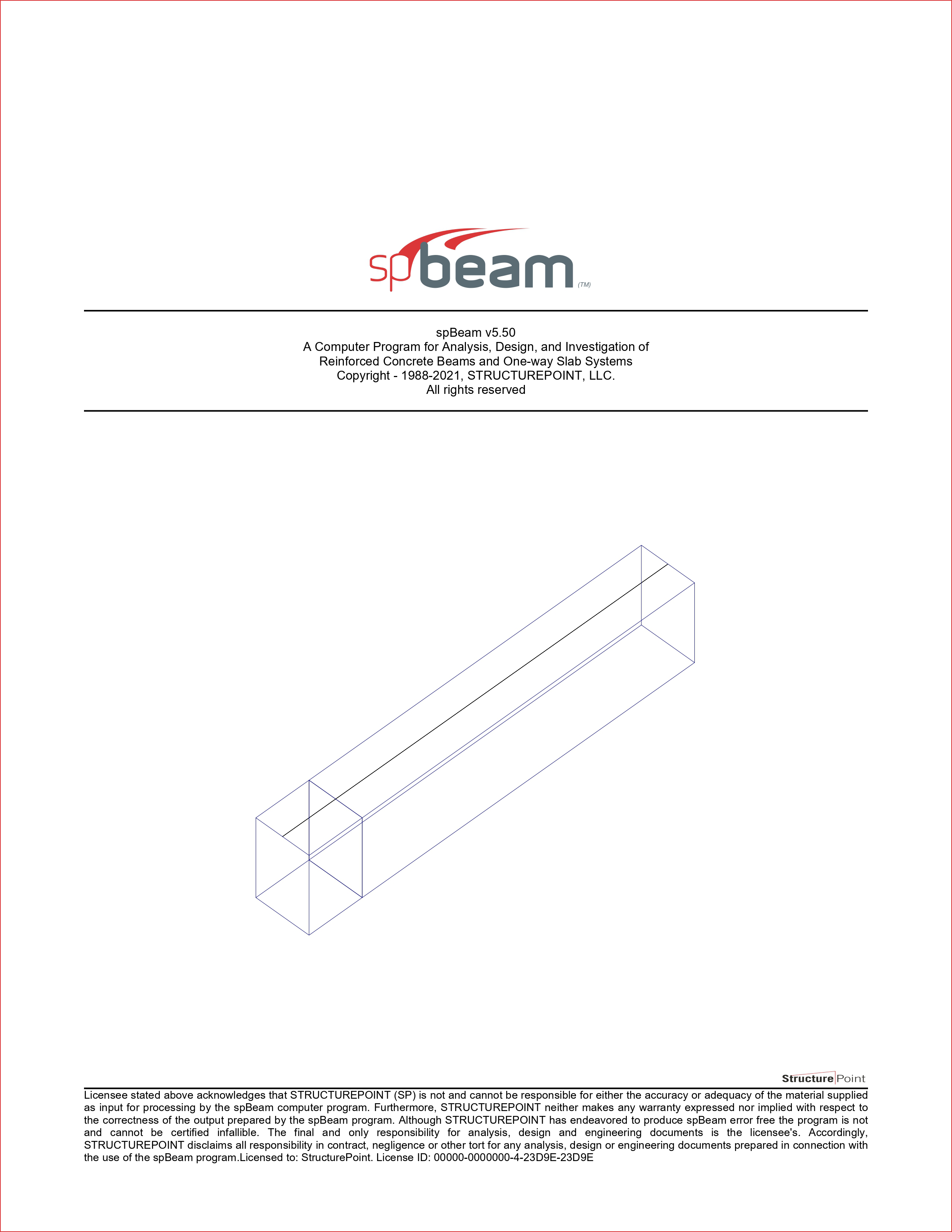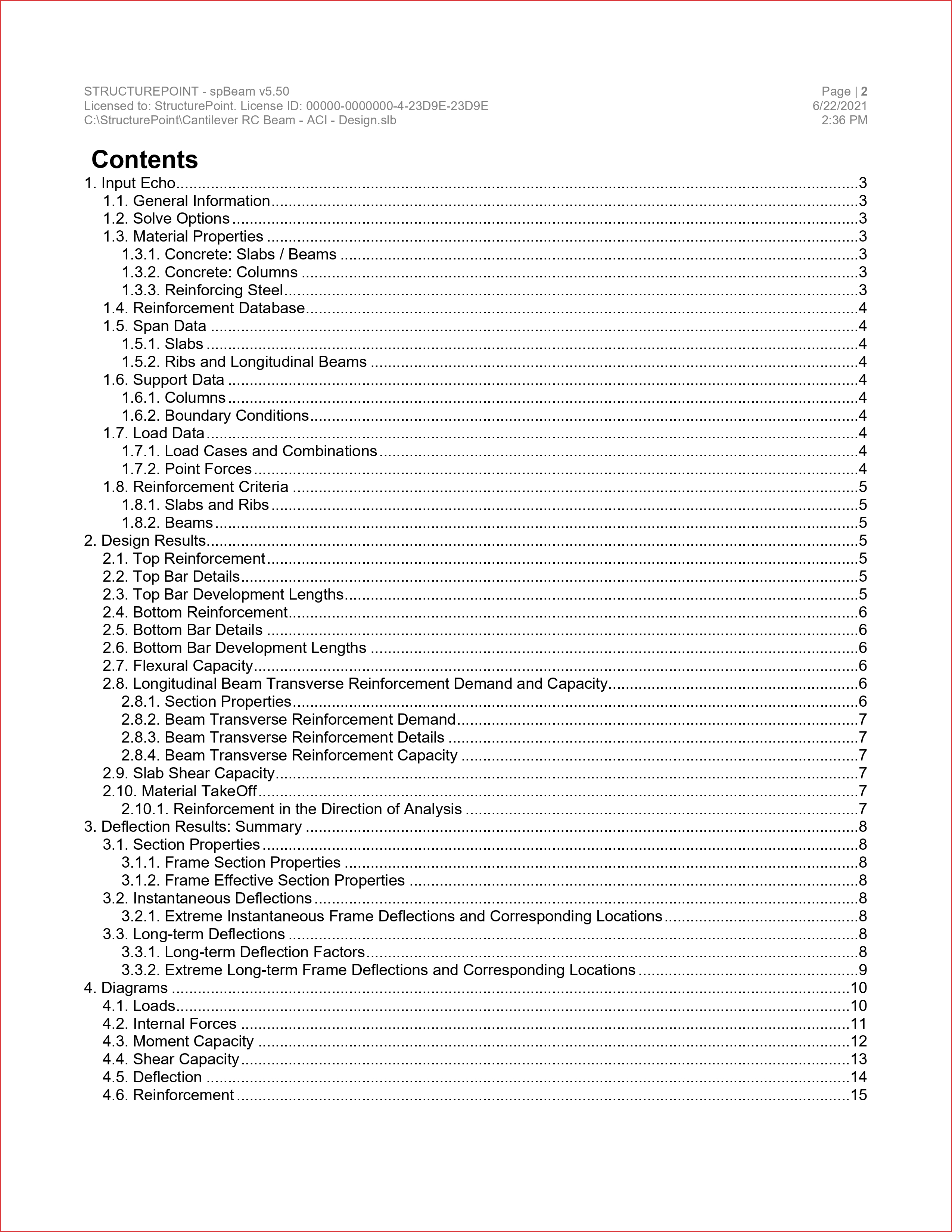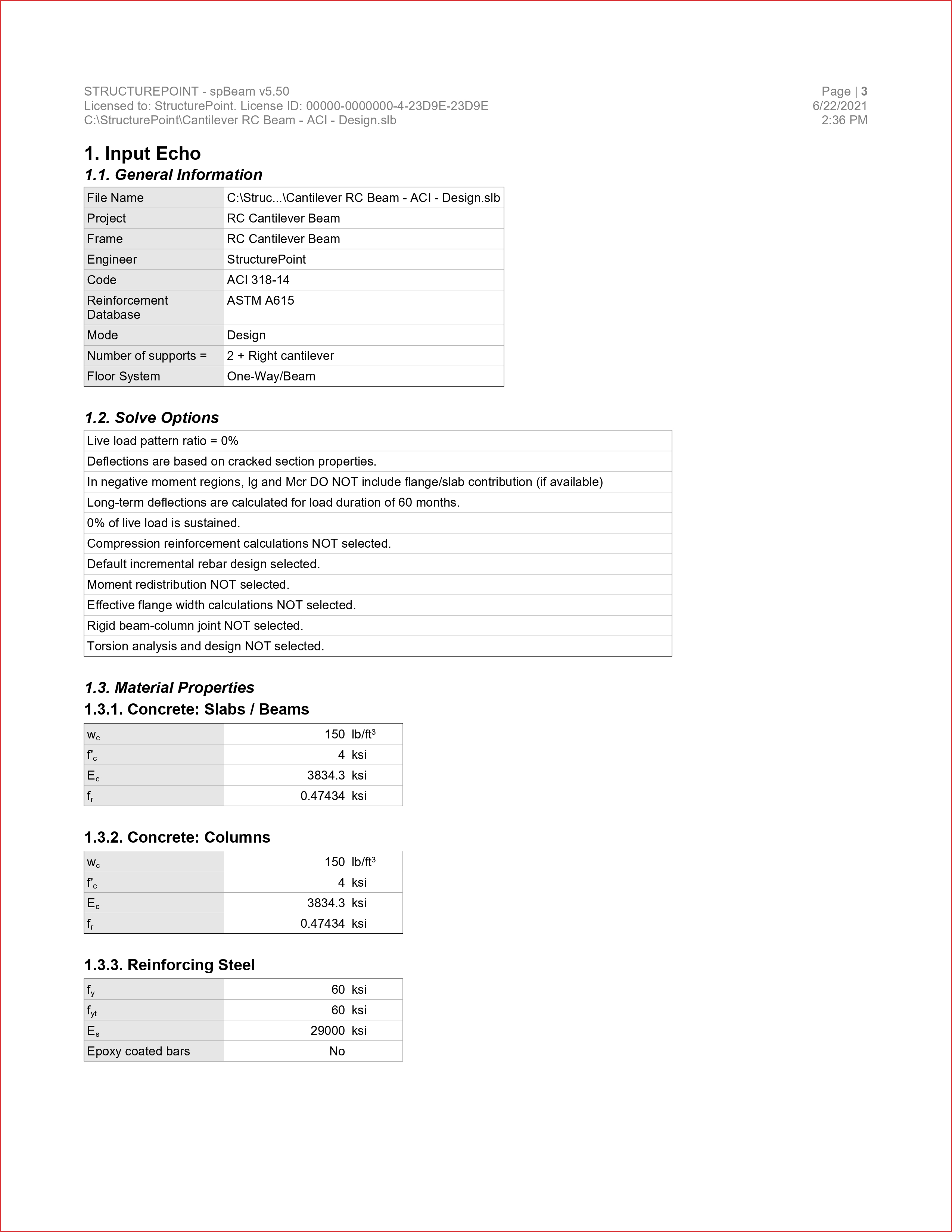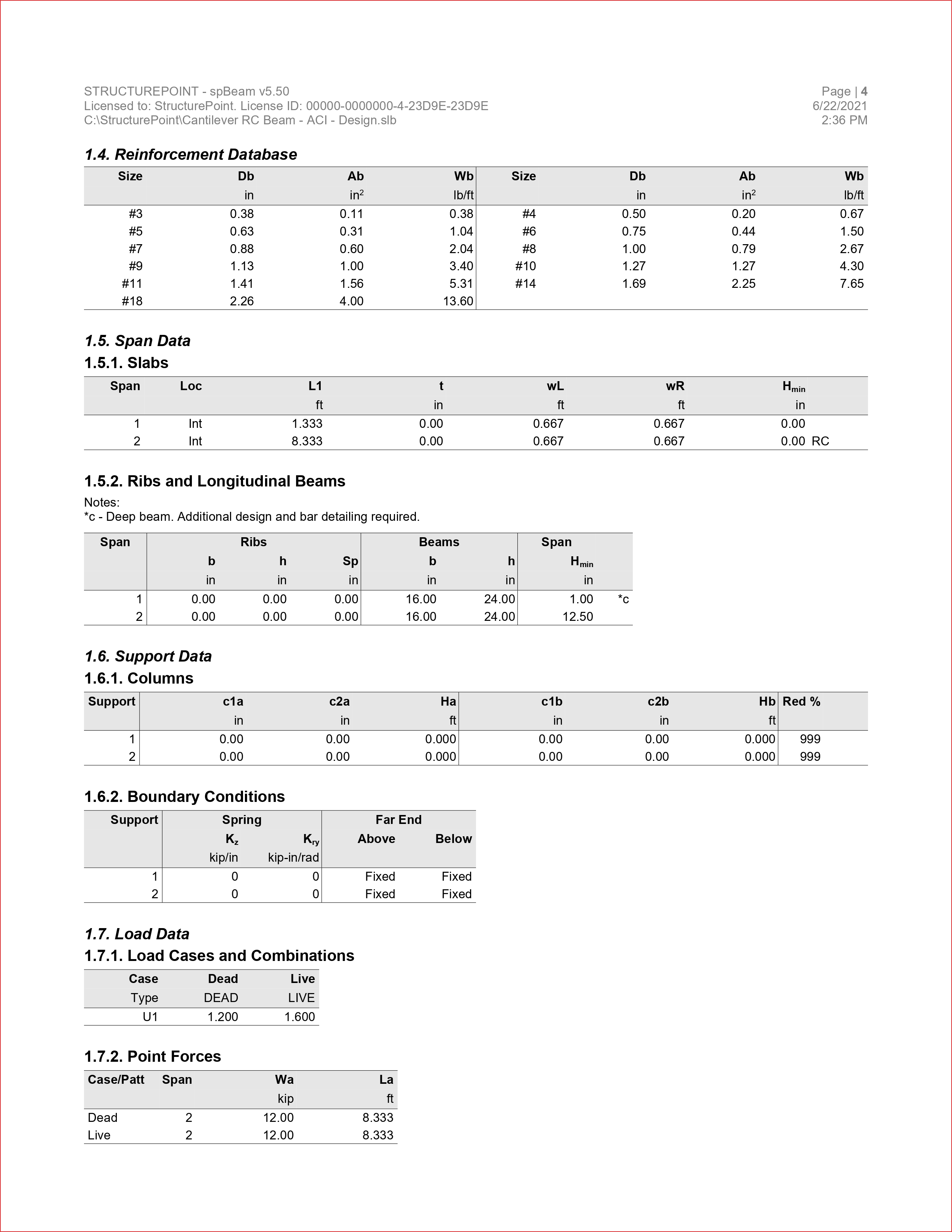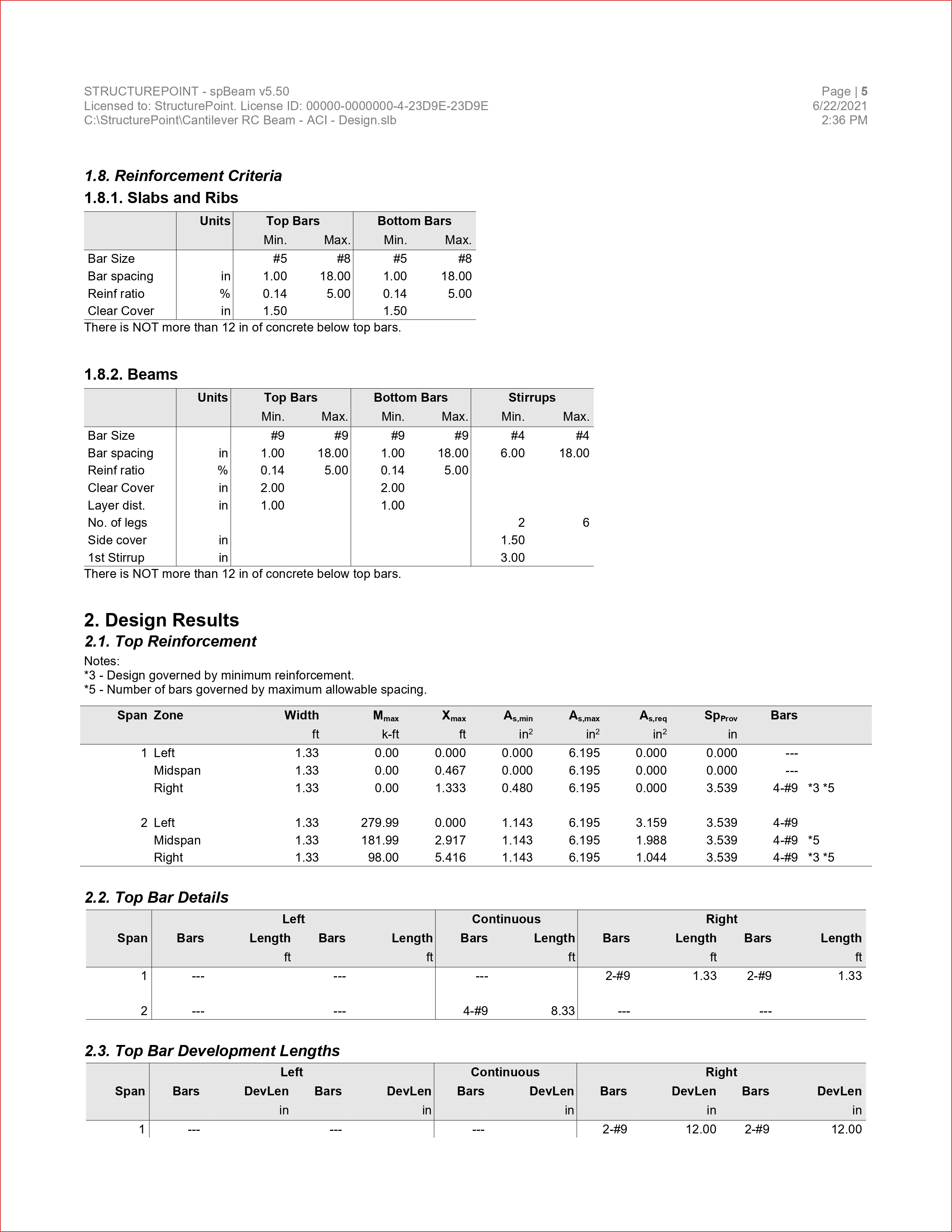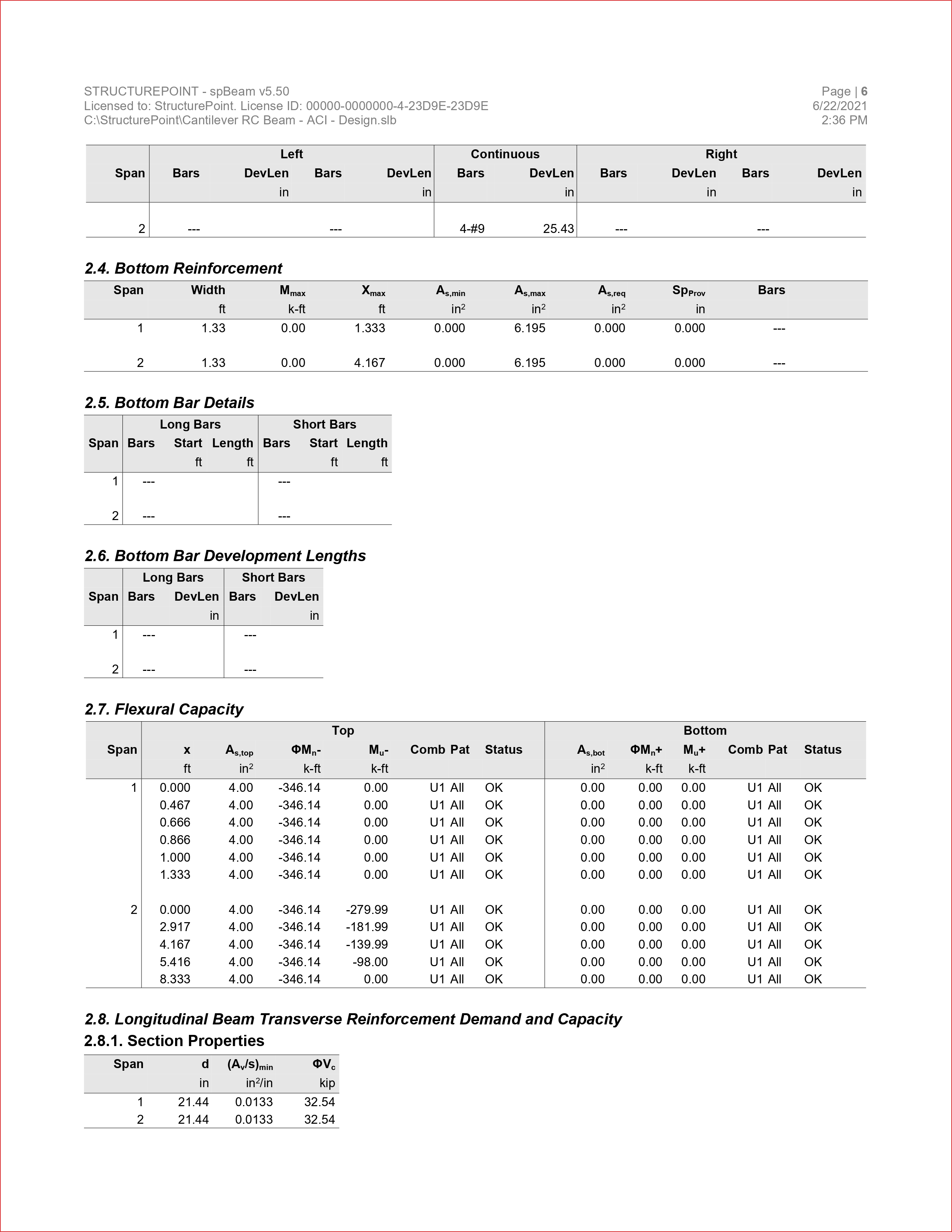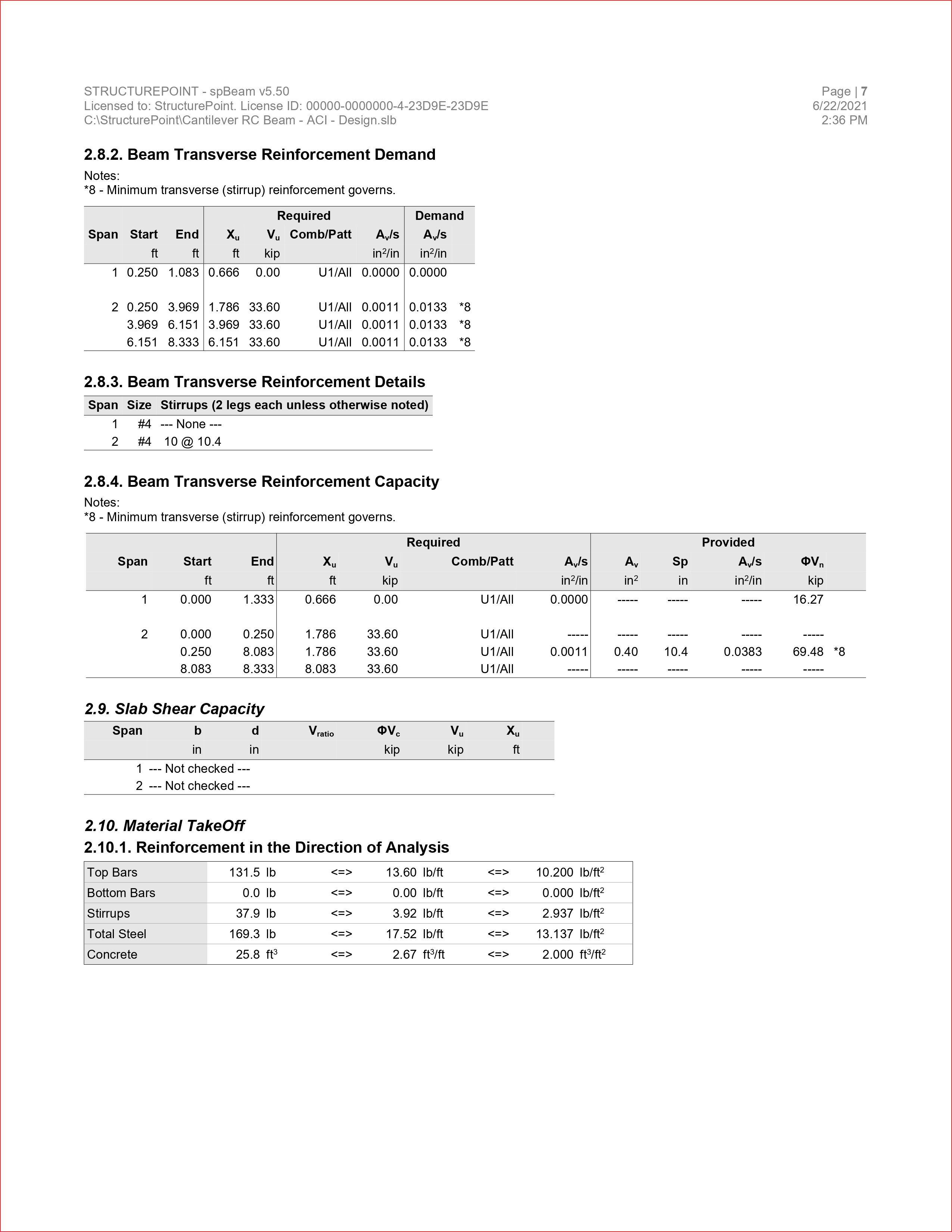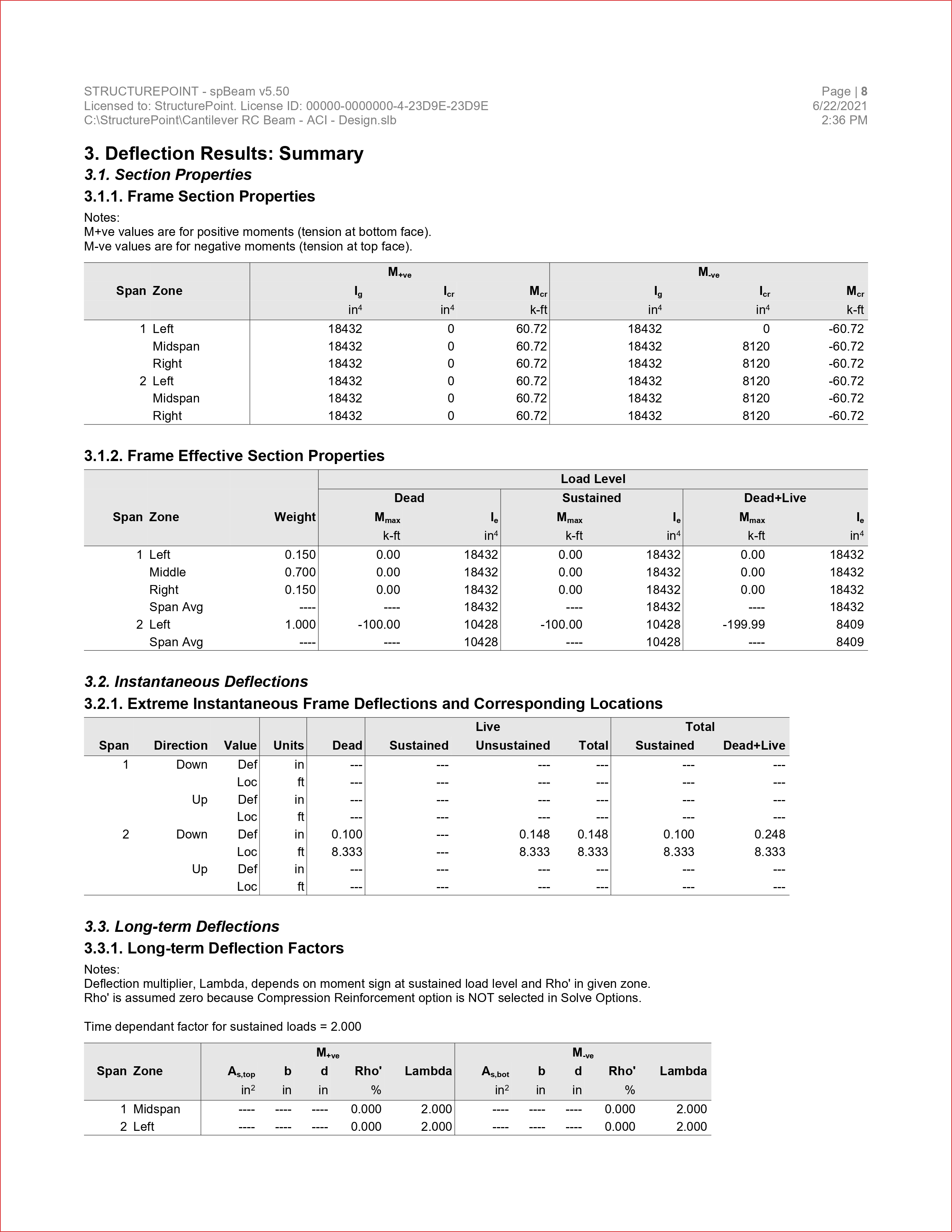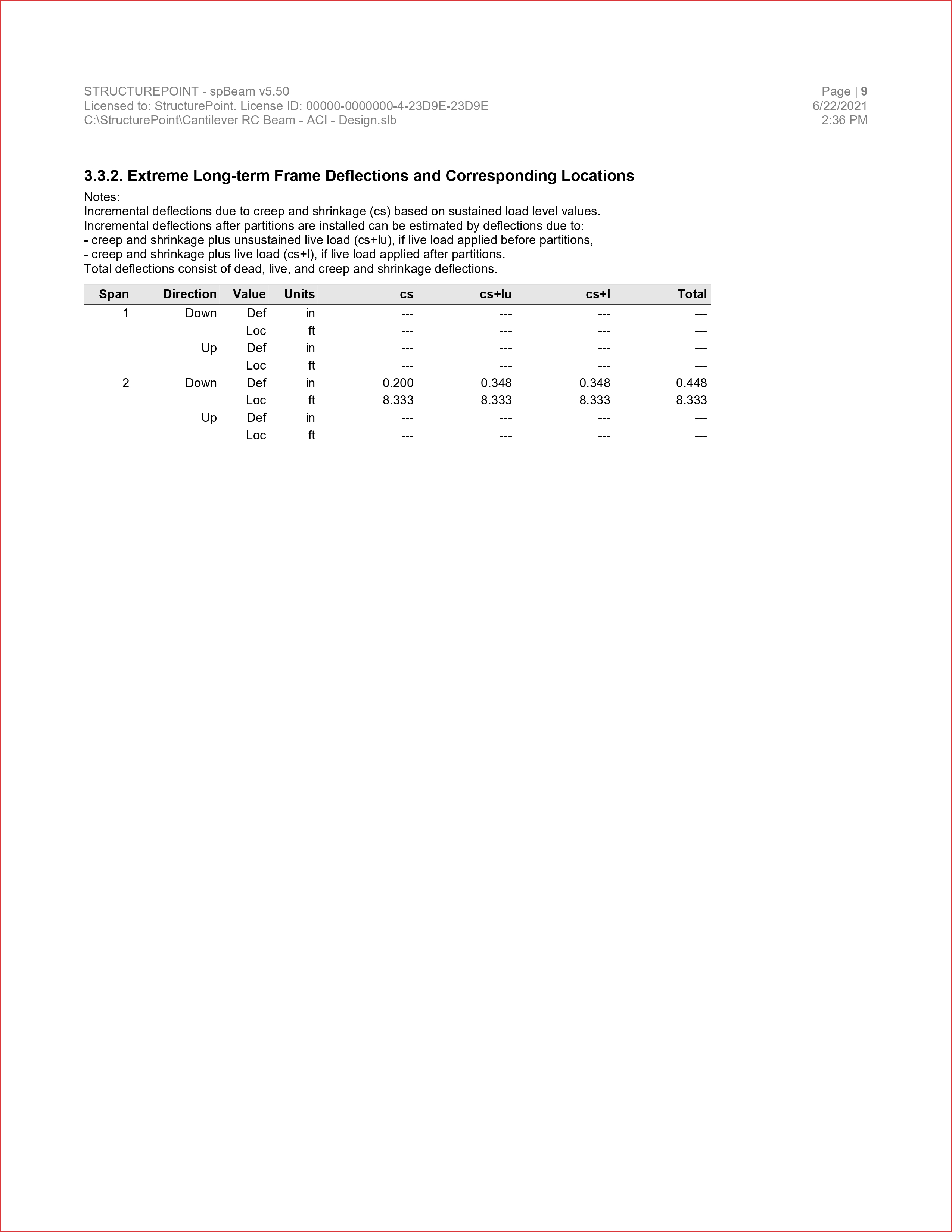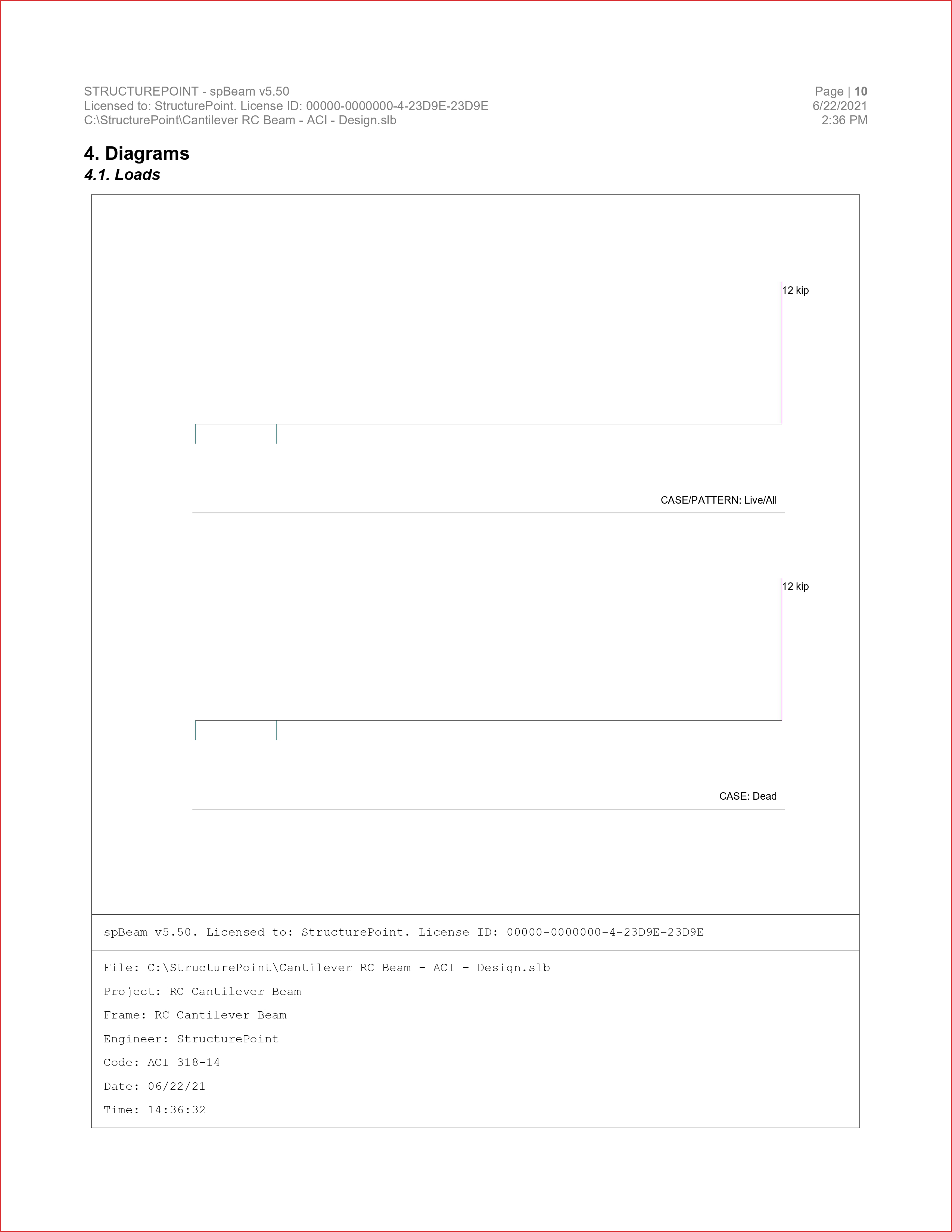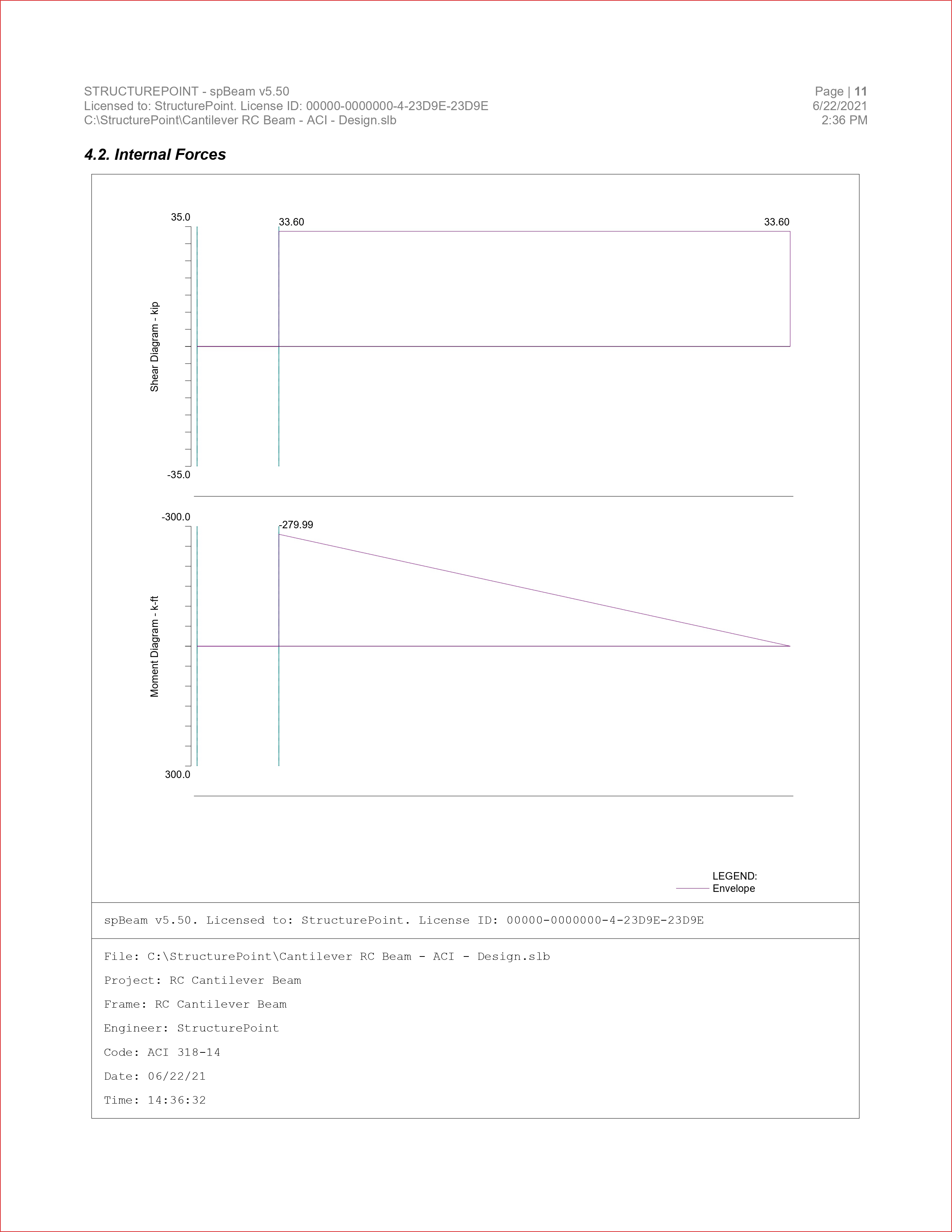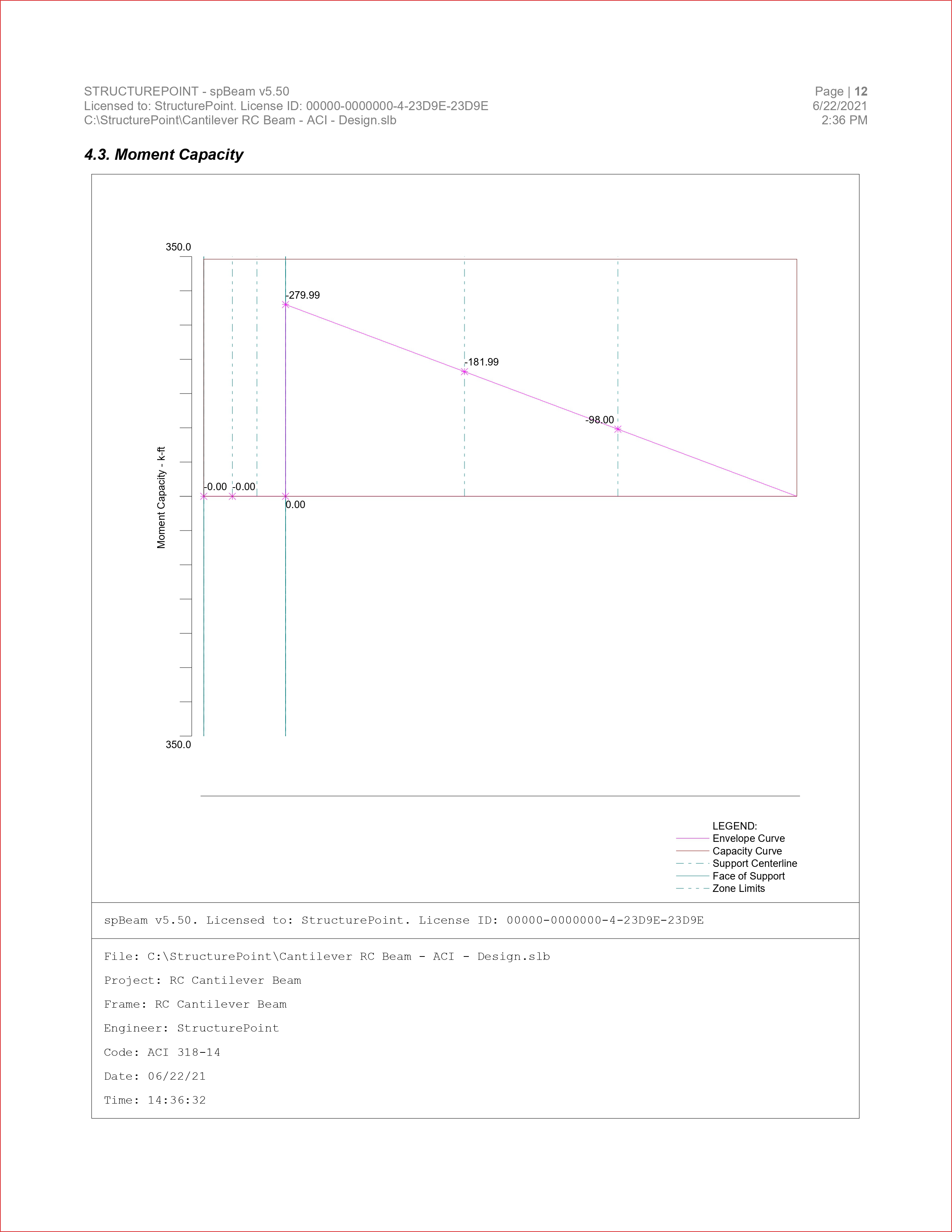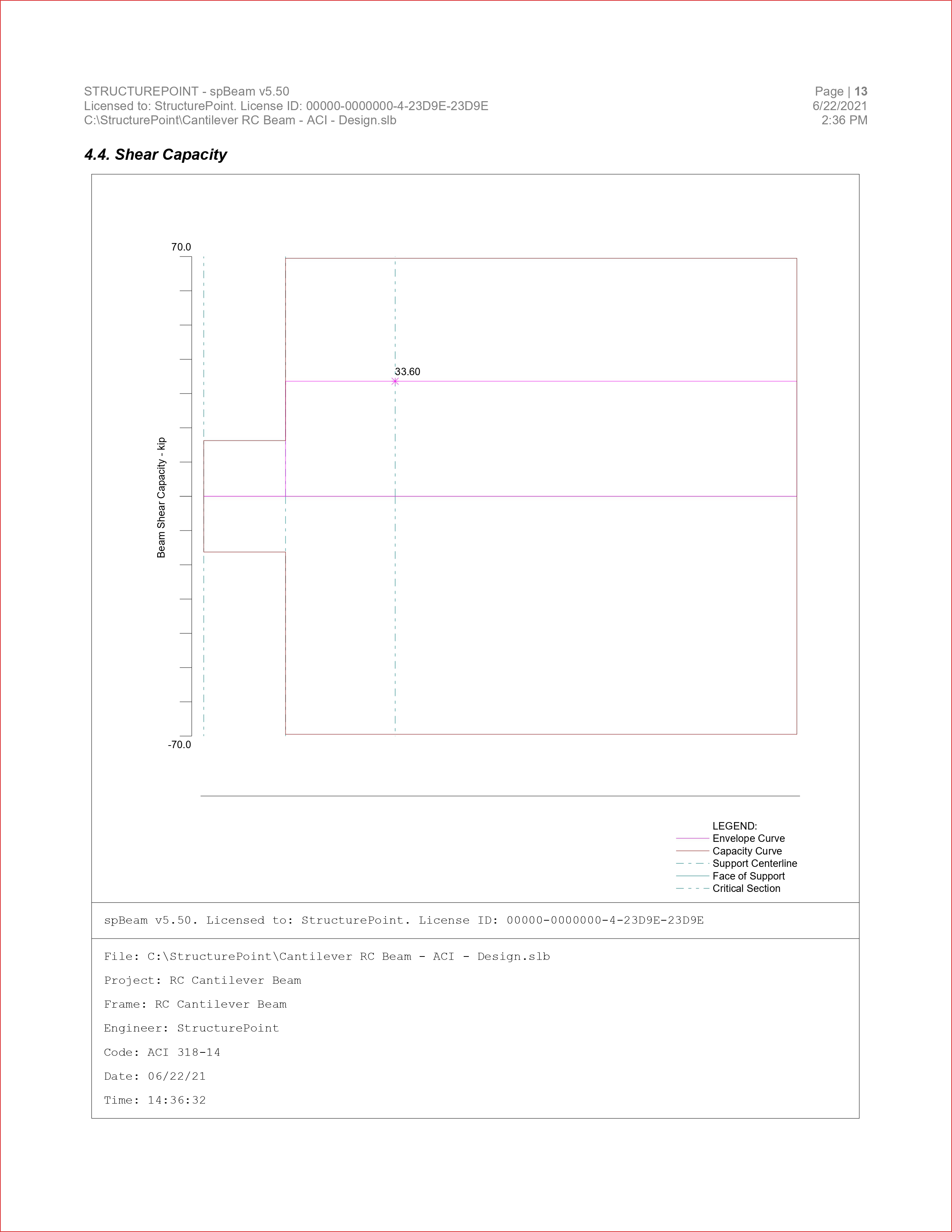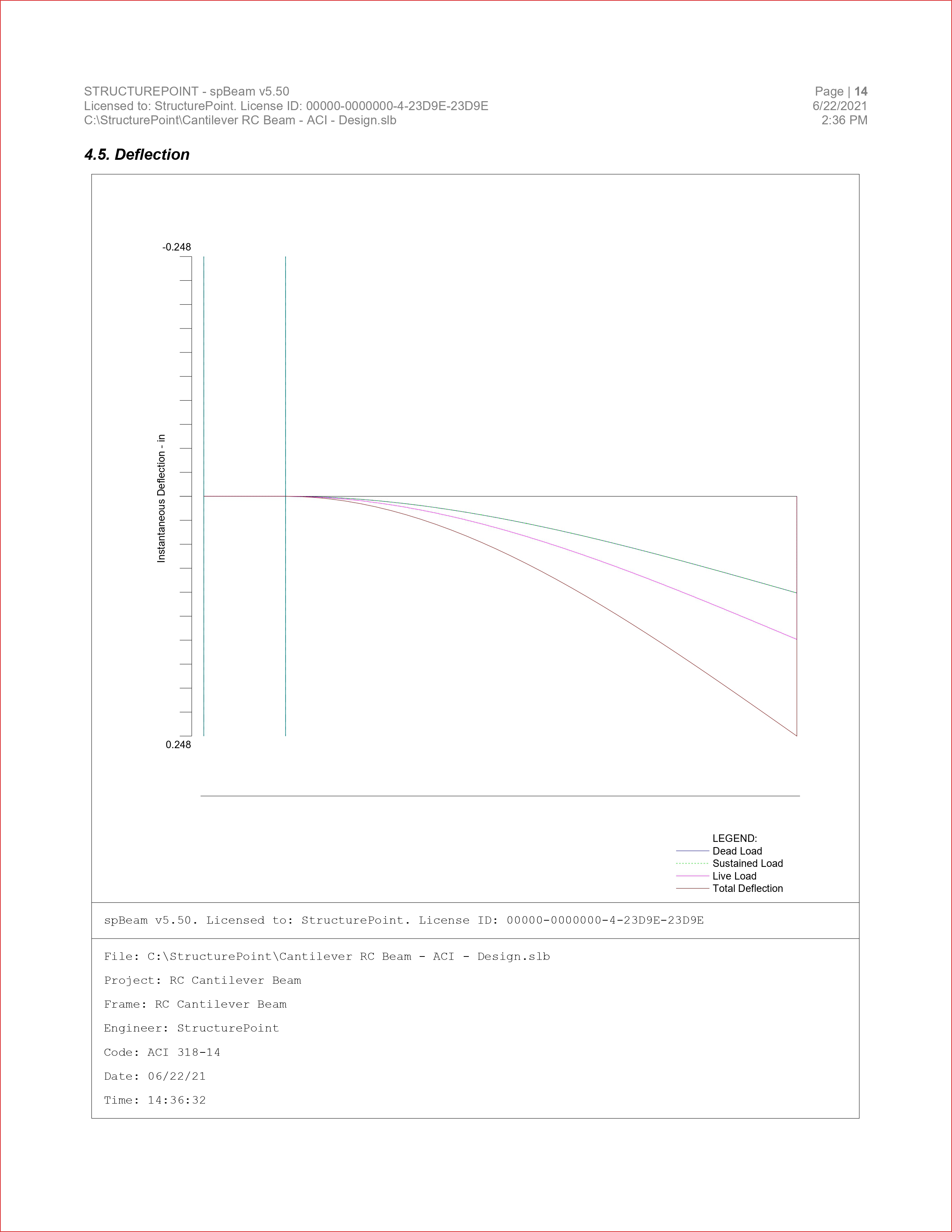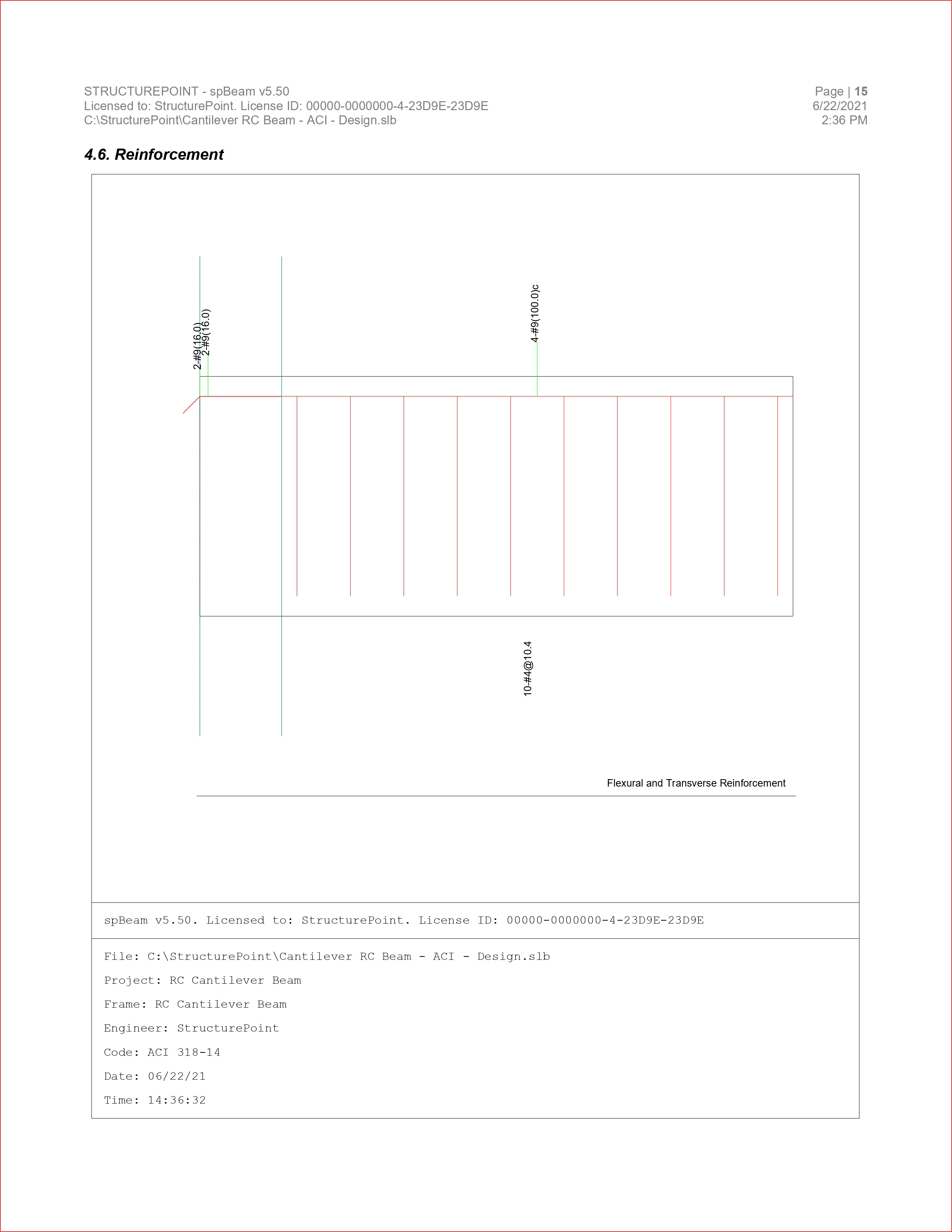7. Cantilever Beam Analysis and Design - spBeam Software
spBeam is widely used for analysis, design and investigation of beams, and one-way slab systems (including standard and wide module joist systems) per latest American (ACI 318-14) and Canadian (CSA A23.3-14) codes. spBeam can be used for new designs or investigation of existing structural members subjected to flexure, shear, and torsion loads. With capacity to integrate up to 20 spans and two cantilevers of wide variety of floor system types, spBeam is equipped to provide cost-effective, accurate, and fast solutions to engineering challenges.
spBeam provides top and bottom bar details including development lengths and material quantities, as well as live load patterning and immediate and long-term deflection results. Using the moment redistribution feature engineers can deliver safe designs with savings in materials and labor. Engaging this feature allows up to 20% reduction of negative moments over supports reducing reinforcement congestions in these areas.
Beam analysis and design requires engineering judgment in most situations to properly simulate the behavior of the targeted beam and take into account important design considerations such as: designing the beam as rectangular or T-shaped sections; using the effective flange width or the center-to-center distance between the beam and the adjacent beams. Regardless which of these options is selected, spBeam provide users with options and flexibility to:
1. Design the beam as a rectangular cross-section or a T-shaped section.
2. Use the effective or full beam flange width.
3. Include the flanges effects in the deflection calculations.
4. Invoke moment redistribution to lower negative moments
5. Using gross (uncracked) or effective (cracked) moment of inertia
For illustration and comparison purposes, the following figures provide a sample of the results obtained from an spBeam model created for the cantilever beam discussed in this example.
